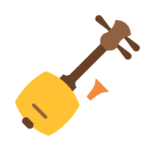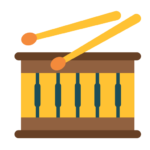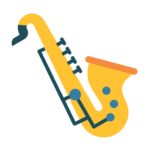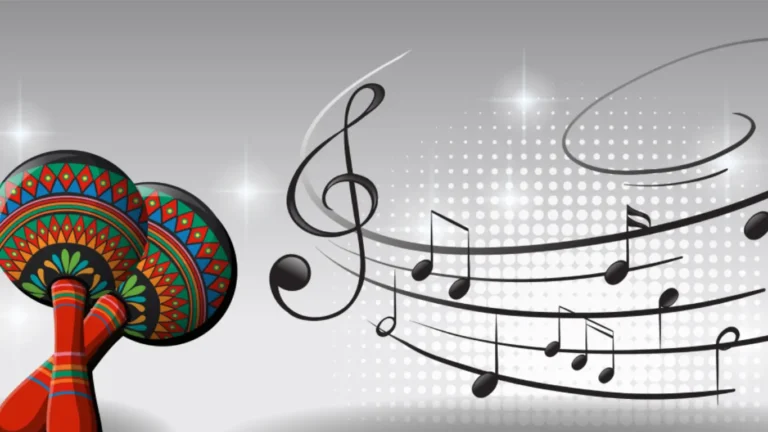If you’ve ever heard a haunting Persian melody played on tar, setar, santur, or kamancheh in Toronto’s Iranian cultural circles (or on YouTube) and wondered how that music is structured — the answer lies in the Iranian Dastgah system (or Persian Dastgah). In this article you will:
- Understand what “Dastgah” means in Persian music theory
- Explore the 7 main Dastgahs and 5 Avaz (secondary modes) (i.e. the Persian music modes)
- Learn about radif, gusheh, and the internal structure of Persian traditional music
- See how theory connects to Iranian traditional music instruments and performance
- Discover how someone in Toronto can begin learning, and how Navasaz (a music academy in Toronto) can help
- Get some fresh FAQs to clarify common doubts
Let’s begin.
What Is the Dastgah System? Definition & Background
- In Persian (Iranian) traditional music, a Dastgah is a modal system — more than just a scale: it includes melodic tendencies, ornamentation, central notes, and permissible melodic “paths.”
- The term “Dastgah” literally can be read as dast(“hand”) + gah (“place”), which some theorists tie to the hand positions on string instruments.
- Over the 19th and early 20th centuries, the Persian musical world moved toward a more codified system, forming the standard set of 7 Dastgahs and 5 Avaz (secondary derivative modes). (ref: Circle of Ancient Iranian Studies)
- The full repertoire, or body of material in Persian classical music, is called the radif— essentially the ordered collection of melodic pieces (gusheh) organized under each Dastgah/Avaz. (ref: Wikipedia)
So, the Dastgah system = the framework of Persian modes, melodic patterns, and improvisational rules that underpin Persian traditional music.
Read More: Hang Drum Tuning vs Handpan
Persian Music Modes: 7 Dastgahs + 5 Avaz
In practice, most performances or teaching systems recognize 12 modal entities: 7 main Dastgahs and 5 Avaz (derived modes) (ref: Circle of Ancient Iranian Studies).
Here’s a practical overview of all 12:
|
Main / Parent |
Avaz (derived) |
Emotional / Character Notes* |
|---|---|---|
|
Shur |
Abu Ata, Bayāt-e Tork, Afshari, Dashti |
Shur is often called the “mother” mode; many melodies derive from or modulate through it. It is expressive, melancholic, spiritual. (ref: Wikipedia) |
|
Homāyoun |
Bayāt-e Esfahān |
Deep, sorrowful, introspective; one of the emotionally powerful modes. |
|
Segāh |
(none) |
Passionate, strong, ornate; microtonal intervals are more pronounced. |
|
Chāhārgāh |
(none) |
Bold, dynamic, rhythmic, often used for instrumental display. (ref: Destination Iran) |
|
Mahur |
(none) |
Bright, major-like, used in celebratory or uplifting pieces; somewhat analogous to Western major in feel (though with Persian nuance) (ref: Wikipedia) |
|
Rast-Panjgah |
(none) |
Noble, dignified, intellectual; sometimes compared to a major mode but with mode-specific rules. |
|
Nava |
(none) |
Serene, contemplative, subtle. |
These emotional or “character” assignments are not strict; different masters or listeners may feel modes differently.
Some elaborations:
- Avaz Dashti is a melancholic, rural feeling mode, derived from Shur.
- Avaz Abu Ata and Afshari – expressive, slightly more ornamented variants associated with Shur.
- Avaz Bayāt-e Esfahān is tied to Homāyoun, with its own melodic contour. (ref: navaensemble.com)
These 12 modal units give a broad palette for composition, improvisation, and emotional expression in Persian music.
Read More: Music Education for Adults
Structure Inside a Dastgah: Radif, Gusheh, & Performance Flow
When a musician presents a Dastgah in performance or pedagogy, it is not just playing a fixed scale. There is a deeper architecture:
Radif and Gusheh
- Radif is the ordered repertoire of melodies (gusheh) preserved through oral tradition (and sometimes notation). Each master may have a slightly different radif, but most adhere to canonical forms.
- Gusheh (or gousheh) means "piece" or "corner" — small melodic units within a Dastgah, each with its particular contour, name, pitch centers, optional modulations, and expressive idioms.
Within a Dastgah, a typical path will move through several gusheh, sometimes modulate to related modes, then return (“forud” or “cadence”) to the home modal center.
Read More: The Top Choice for Music Lessons Barrie
Typical Components in a Dastgah Performance
A performance or a composed suite in Persian traditional music often includes a sequence of parts. Here is a conventional order (though not always rigid):
- Pish Daramad– rhythmic or semi-rhythmic prelude to set mood.
- Daramad– the introduction or opening in the mother modal position (main tonal center).
- Avaz– free, rhythmic-free vocal (or instrumental) improvisation in non-metered style.
- Tasnif– composed, metered song (lyrics + melody) within the Dastgah.
- Chahar-mezrab– rhythmic instrumental piece with rapid strokes (often four strokes).
- Reng– closing rhythmic/dance tune, commonly in 6/8 time signatur
Many performances will intersperse improvisational passages, transitions between gusheh, and modulation (pardehgardani) before returning to the home modal center (forud).
This architecture gives a Dastgah both a sense of freedom (in improvisation) and coherence (through modal structure and recurring motifs).
Read More: Finding the Perfect Adult Piano Teacher
Persian Music Theory: Intervals, Ornamentation & Microtones
One of the most fascinating (and challenging) features of Persian music is microtonality and ornamentation.
Microtones, Koron & Sori
- Persian Dastgahs frequently use quarter tones(or approximately so). There are special accidentals called koron (a half-flat, lowering a semitone further) and sori (raising a note slightly) used in notation and performance. (ref: Reddit)
- Because of this, Persian music cannot always be faithfully represented in Western 12-tone equal temperament. Many instruments (tar, setar, santur, kamancheh) are adjusted or played by ear to approximate these microtonal intervals. (ref: Tapadum)
Ornamentation, Tahrir & Melodic Movement
- Ornamentation is fundamental: sliding between notes, vocal trills (tahrir), glissandi, subtle pitch inflections are integral to giving life to a Dastgah rendition.
- The motion of melody is not strictly up or down; expressive inflections, pitch embellishments, and micro-movements define the “soul” of a performance.
- Also, modulation (pardehgardani) — moving between gusheh of related Dastgahs or Avaz within a performance — is a commonly used expressive tool.
So, mastering Persian traditional music requires not just knowing scales, but internalizing ornamentation, fluid motion, and microtonal nuance.
Read More: Iranian Traditional Instruments
Instruments & Their Role in Persian Traditional Music
A theory is more meaningful when tied to real instruments. Here are some of the most common in Iranian classical music:
- Tar– a plucked, skin-membrane lute with a long neck; one of the signature instruments of Persian music
- Setar– a smaller, more delicate lute, good for intimate settings or solo vocal accompaniment
- Santur– hammered dulcimer, played with mallets; good for rich, shimmering textures
- Kamancheh– bowed string instrument, held like a vertical fiddle
- Ney– end-blown flute, used especially in vocal and contemplative modes
- Tombak / Daf– percussion — often the tombak (goblet drum) is used to support rhythmic pieces like Chahar-mezrab or Reng
These instruments are either fretless or adjustable (especially tar, setar) to accommodate microtonal tuning. Also, their expressive techniques (vibrato, slides, trills) are vital for performing within the Dastgah framework.
In ensemble settings, the melodic instrument or voice leads, while accompaniment is generally minimal—reinforcing modal tones or rhythmic support, not harmonic chords, since traditional Persian music is fundamentally monophonic / modal, not harmonic.
Read More: 6 Magical Instruments Like Handpan
Learning Persian Traditional Music in Toronto: What to Know & Ask
If you are in Toronto (or anywhere outside Iran) and wish to learn Iranian Dastgah system and traditional Persian music structure, here are practical tips:
What You Should Ask / Seek in a Teacher
- Knowledge of Radif & Gusheh: does the teacher follow a known Radif (Mirza Abdollah, Mirza Hossein-Qoli, etc.)?
- Emphasis on Ear Training: microtonality and ornamentation require you to hear and feel intervals, not just read notation.
- Instrumental adaptability: ensure your instrument (tar, setar, etc.) can accommodate Persian tuning.
- Understanding of Dastgah structure: not only playing, but improvisation within modal rules.
- Online / in-person flexibility: as a Toronto-area student, getting a hybrid mode helps maintain consistency.
- Performance opportunities / listening exposure: attending Persian music concerts, sessions, or recordings helps internalize styles.
Read More: The Best Online Music Class
Challenges & Encouragements
- Because of microtones and ornamentation, it may feel unintuitive at first compared with Western classical or pop music.
- But Persian traditional music is deeply expressive, and connecting with a teacher versed in Dastgah offers a rewarding journey.
In Toronto, there is a diaspora community and occasional Persian music events — try to attend performances to hear how masters navigate Dastgahs live.
Read More: Hang Drum Beginner Guide
Role of Technology & Modern Tools
- Online tutorials, recorded Radif corpora, and digital resources help, but they must be complemented by guided mentorship to understand nuance.
- Recent computational research (e.g. Radif corpora, analysis of non-metric performance) is helping preserve and more systematically analyze Dastgah repertoires. (ref: arXiv)
Read More: A Beginner’s Guide to Playing DAF
Why the Dastgah System Still Matters Today?
- The Dastgah framework is the backbone of almost all serious Persian (Iranian) classical music, even in contemporary compositions.
- It allows musicians to improvise richly within structure, giving pieces emotional contour, surprise, unity, and identity.
- Because of its deep cultural roots, Dastgah music carries historical, poetic, spiritual resonance.
In places like Toronto, teaching and sustaining this tradition preserves a living bridge between Persian heritage and new audiences.
Navasaz: Persian Music Academy in Toronto
If you're in Toronto and want to learn the Dastgah system / Persian traditional music, you should check out Navasaz, a music academy with expertise in Persian music. Here’s why they might be the right fit:
- Specialized in Persian (especially traditional Persian) music: they understand Dastgah, Radif, Gusheh, ornamentation, and performance practice.
- Online & In-Person Classes: whether you live near the GTA or far away, they can accommodate you.
- All Levels Welcome: from absolute beginner to advanced, they structure instruction to your level.
- Cultural & Community Context: being in Toronto, they may also help you connect with local Persian music events, ensembles, or performance opportunities.
If you contact them and mention your interest in the Dastgah system, they’ll likely help you pick a starting mode (often Shur or Mahur) and guide you step by step through radif, improvisation, and performance.
FAQs
No — each Dastgah (and its gusheh) has a specific palette of intervals (including which notes get the koron or sori) but not every microtone is used in every mode. The usage is constrained by modal tradition and permissible melodic movement.
Pianos tuned to Western equal temperament struggle with many microtonal intervals in Persian modes. Some musicians retune pianos or use digital/microtonal keyboards, but most authentic Persian performance is done on fretless or adjustable instruments.
Yes, there is historical overlap and shared modal ideas. But the Persian Dastgah system has its own repertoire, ornamentation style, melodic evolution, and aesthetic rules. The same mode name (e.g. Rast) may mean somewhat different things in different traditions.
It varies widely by discipline, ear sensitivity, practice, and teacher. But many students spend months to a year just mastering one Dastgah’s radif, gusheh, ornamentation, and improvisational fluency before moving deeply into others.
Yes — many foreign students learn to sing in Persian (transliteration, pronunciation) guided by teachers. But you will also benefit from familiarity with Persian poetry (classical poets), meter, and phonetics.
 String Instr
String Instr Percussion Instr
Percussion Instr Wind Instr
Wind Instr Keyboard Instr
Keyboard Instr Tools
Tools Books
Books

